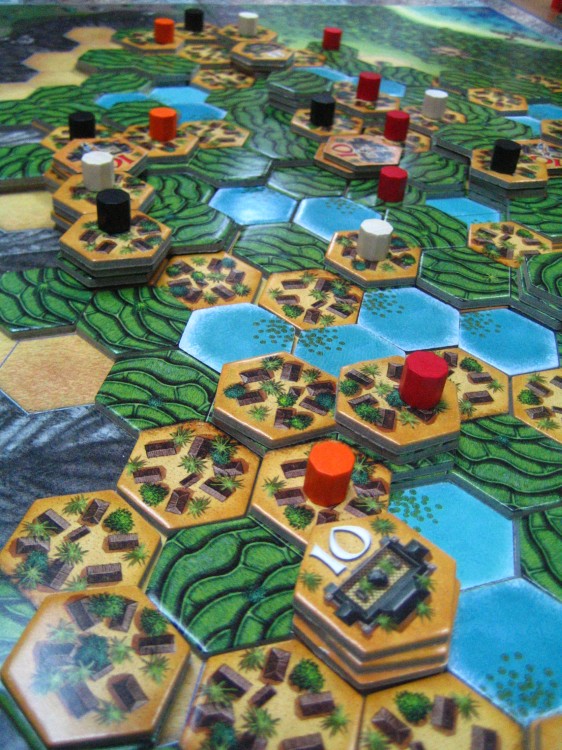Designer: Mac Gerdts
All the fun of owning your own steam ship line around the turn of the century without the buzzkill of finding out your flagship crashed into an iceberg to the strains of Enya.
The gameplay is relatively simple: buy ships, and deploy them along certain trade routes. If a trade route has more than 3 ships, then the oldest one is pushed out. Ships that are deployed can periodically triggered to collect income, which can be increased by building trading houses. You’ll also need to gather coal to power the ships, and one particular trade route gives bonuses for having the fastest possible ship.
Interesting Mechanic: Action Selection. Each player starts with half a dozen action cards – what they can do on their turn is play one of those cards, at which point they can’t play that card again until the card is refreshed. You refresh cards with the same action that adds new cards to your deck. Players who want more power fast will do this quickly, but the game incentivizes you to hold off a few turns if you can.
Bonus Interesting Mechanic: The Stock Market. There are always six ships for sale. If a ship is purchased, another ship is put to the side from the market into the stock market. This acts as a multiplier for final scoring, making ships that haven’t been bought more valuable. This very simple mechanic adds a nice little economic speculation to the game.
I only played Transatlantic once, and I really enjoyed the experience, which was that of a simple yet deep economic sim. I am told that Transatlantic is similar to and not as good as Concordia, which was made by the same designer, but I am not in a position to make that analysis.








Recent Comments